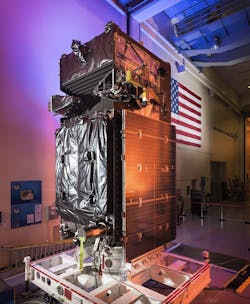In spite of several launch delays, the U.S. Air Force and Lockheed Martin are working to launch the third Space Based Infrared System (SBIRS) satellite from Cape Canaveral, Fla., with a fourth SBIRS satellite to be put in orbit later this year. The SBIRS satellites, which are designed to use infrared (IR) technology for advanced military surveillance functions, including missile warning and intelligence, can also be used for civilian and government applications, such as firefighting and public safety.
“At Lockheed Martin, we understand the Air Force’s important mission to protect our nation and allies around the world, as well as the critical role that SBIRS plays in their continued ability to respond to evolving threats,” said David Sheridan, vice president of the company’s Overhead Persistent Infrared Systems mission area. “With the launch of GEO Flight 3, we are proud to further enhance SBIRS infrared surveillance capabilities, and we look forward to working with our customer and industry teammates toward 100 percent mission success.”
As with the earlier SBIRS satellites, GEO Flight 3 will maintain a geosynchronous earth orbit (GEO) at approximately 22,000 miles altitude, where it will use powerful cameras and IR sensors to detect and track heat-generating objects, such as missiles. By eventually using a coordinated constellation of SBIRS satellites orbiting the earth, wide-area surveillance will be possible in addition to focusing on specific areas of interest.


